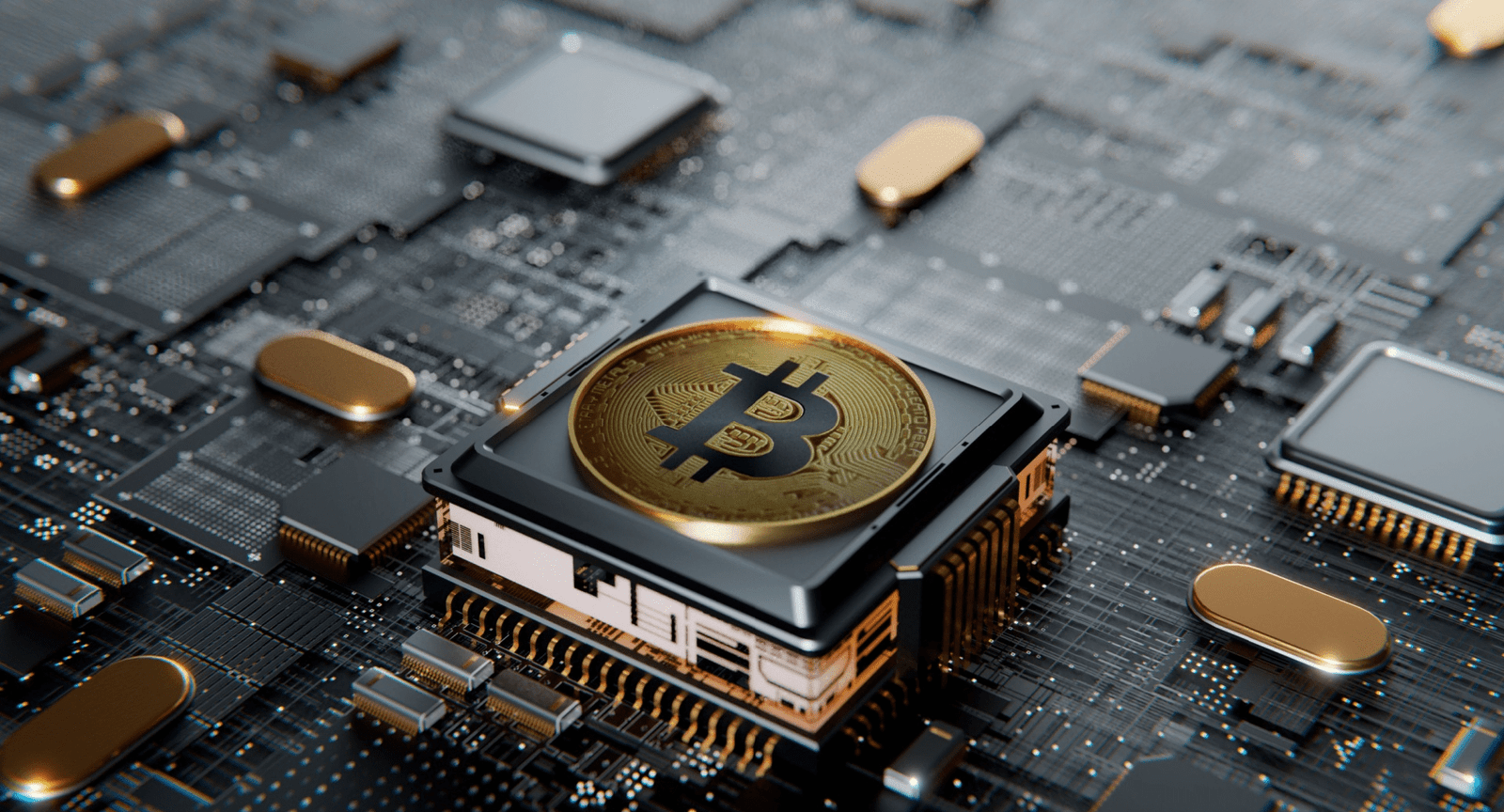The cryptocurrency mining landscape has evolved dramatically, making it crucial to identify the best bitcoin mining machines 2025 has to offer. With Bitcoin’s continued growth and increasing network difficulty, choosing the right mining hardware can mean the difference between profitable operations and costly mistakes. Today’s mining ecosystem demands high-performance ASIC miners that deliver exceptional hash rates while maintaining energy efficiency. Whether you’re a seasoned mining veteran or just entering the cryptocurrency space, understanding which machines provide the best return on investment is essential for success in this competitive market.
Understanding Bitcoin Mining in 2025
Bitcoin mining has reached unprecedented levels of sophistication and competition. The network’s difficulty continues to climb, making it essential to invest in the most advanced mining equipment available. Modern bitcoin mining relies entirely on Application-Specific Integrated Circuits (ASICs), which are purpose-built machines designed exclusively for mining cryptocurrencies.
The mining industry has shifted toward industrial-scale operations, but individual miners and smaller mining farms can still achieve profitability with the right equipment and strategy. The key lies in selecting machines that offer optimal performance per watt consumed, ensuring your electricity costs don’t exceed your mining rewards.
Current Market Conditions
The current bitcoin mining environment presents both challenges and opportunities. Network hash rate has reached all-time highs, while mining rewards remain substantial for those using efficient equipment. Energy costs have become the primary factor determining profitability, making power-efficient machines more valuable than ever.
Mining difficulty adjustments occur approximately every two weeks, continuously adapting to the total network computing power. This dynamic system ensures that blocks are mined roughly every ten minutes, regardless of how many miners join or leave the network.
Best Bitcoin Mining Machines 2025 – Top Performers

Selecting the optimal mining hardware requires careful consideration of several factors including hash rate, power consumption, initial cost, and expected lifespan. The following machines represent the pinnacle of mining technology available in 2025.
Bitmain Antminer S21 Series
The Antminer S21 series continues to dominate the mining hardware market with its exceptional performance metrics. These machines deliver outstanding hash rates while maintaining relatively low power consumption, making them ideal for both large-scale operations and individual miners.
The S21 models feature advanced cooling systems, robust construction, and user-friendly interfaces that simplify setup and monitoring. With hash rates ranging from 200 TH/s to 335 TH/s, these machines represent the cutting edge of mining technology.
Key Specifications:
- Hash Rate: 200-335 TH/s
- Power Consumption: 3,500-5,500W
- Efficiency: 17.5-19.5 J/TH
- Expected Lifespan: 3-4 years
MicroBT Whatsminer M60 Series
MicroBT’s Whatsminer M60 series offers compelling alternatives to Bitmain’s offerings, featuring competitive hash rates and energy efficiency. These machines have gained popularity among miners seeking reliable performance and excellent build quality.
The M60 series incorporates advanced semiconductor technology and optimized cooling solutions, resulting in stable operation even under demanding conditions. These miners excel in environments where consistent performance and durability are paramount.
Key Specifications:
- Hash Rate: 172-204 TH/s
- Power Consumption: 3,344-3,912W
- Efficiency: 18.5-19.5 J/TH
- Noise Level: 75-80 dB
Canaan AvalonMiner 1466
Canaan’s AvalonMiner 1466 provides an excellent balance of performance and affordability, making it an attractive option for miners seeking solid returns without premium pricing. This machine delivers consistent performance with reasonable power requirements.
The 1466 model features Canaan’s proprietary chip design and efficient cooling architecture, ensuring stable operation across various environmental conditions. Its competitive pricing makes it particularly appealing for budget-conscious miners.
Key Specifications:
- Hash Rate: 150 TH/s
- Power Consumption: 3,420W
- Efficiency: 22.8 J/TH
- Operating Temperature: 0-40°C
Performance Comparison and Analysis
When evaluating mining hardware, several metrics determine overall profitability and operational efficiency. Hash rate indicates raw mining power, while efficiency (measured in joules per terahash) determines electricity costs relative to mining output.
Hash Rate vs Power Consumption
The relationship between hash rate and power consumption directly impacts profitability. Higher hash rates generally mean more bitcoin rewards, but increased power consumption raises operational costs. The most profitable machines achieve optimal balance between these factors.
Modern ASIC miners have dramatically improved efficiency compared to previous generations. Current top-tier machines achieve efficiency ratings below 20 J/TH, representing significant improvements over older models that often exceeded 50 J/TH.
Return on Investment Calculations
ROI calculations must account for hardware costs, electricity expenses, mining pool fees, and bitcoin price volatility. Current market conditions suggest that premium mining hardware can achieve payback periods of 12-18 months under optimal circumstances.
Factors affecting ROI include:
- Initial hardware cost
- Local electricity rates
- Mining pool selection
- Network difficulty changes
- Bitcoin price fluctuations
- Hardware maintenance costs
Mining Profitability Factors in 2025
Profitability in bitcoin mining depends on numerous interconnected variables that miners must carefully consider before making equipment investments. Understanding these factors enables better decision-making and improved long-term returns.
Electricity Costs and Energy Efficiency
Electricity costs represent the largest ongoing expense in bitcoin mining operations. Miners in regions with low electricity rates maintain significant competitive advantages over those in high-cost areas. Energy-efficient mining machines become increasingly valuable as electricity prices rise globally.
The most successful mining operations secure electricity rates below $0.06 per kWh, though profitability remains possible at higher rates with efficient equipment. Renewable energy sources are becoming increasingly popular among miners seeking sustainable and cost-effective power solutions.
Network Difficulty and Hash Rate Growth
Bitcoin’s network difficulty adjusts automatically to maintain consistent block times regardless of total network hash rate. As more miners join the network, difficulty increases, requiring more computing power to earn the same rewards.
Historical data shows network difficulty has increased exponentially over bitcoin’s lifetime, with periodic corrections during market downturns. Miners must anticipate continued difficulty growth when projecting long-term profitability.
Market Volatility and Price Considerations
Bitcoin’s price volatility significantly impacts mining profitability. During bull markets, mining becomes highly profitable even with less efficient equipment. Bear markets can quickly eliminate margins for miners using outdated hardware or facing high electricity costs.
Successful miners often employ hedging strategies to manage price risk, including forward selling portions of expected bitcoin production or using financial derivatives to lock in future prices.
Setting Up Your Bitcoin Mining Operation
Establishing a successful mining operation requires careful planning, proper equipment selection, and ongoing optimization. Whether scaling up an existing operation or starting fresh, following best practices ensures maximum profitability and minimal downtime.
Infrastructure Requirements
Mining operations demand robust electrical infrastructure capable of handling high power loads continuously. Most modern mining machines require 220V power connections and generate substantial heat that must be managed through adequate ventilation or air conditioning systems.
Proper electrical installation by qualified professionals is essential for safety and optimal performance. Many miners install dedicated electrical panels and circuits specifically for mining equipment to prevent overloading existing household or commercial electrical systems.
Cooling and Ventilation Systems
ASIC miners generate significant heat during operation, requiring effective cooling solutions to maintain optimal performance and prevent hardware damage. Inadequate cooling can reduce hash rates, increase power consumption, and shorten equipment lifespan.
Popular cooling solutions include:
- Industrial exhaust fans for air circulation
- Immersion cooling systems for maximum efficiency
- Air conditioning units for climate control
- Heat exchangers for waste heat recovery
Mining Pool Selection
Joining mining pools allows individual miners to combine computing power and share rewards proportionally. Pool selection impacts both reward frequency and total earnings, making careful evaluation essential.
Key considerations for pool selection include:
- Pool hash rate and stability
- Fee structures and payout methods
- Geographic location and latency
- Reputation and reliability
- Additional features and services
Maintenance and Optimization
Regular maintenance ensures mining equipment operates at peak efficiency throughout its operational lifespan. Preventive maintenance schedules help identify potential issues before they cause costly downtime or equipment failure.
Routine Maintenance Tasks
Daily monitoring of hash rates, temperatures, and power consumption helps identify performance degradation early. Weekly cleaning of air filters and heat sinks prevents dust accumulation that can impair cooling efficiency.
Monthly comprehensive inspections should include checking all electrical connections, examining fans for wear, and updating firmware when manufacturers release improvements. Annual professional inspections can identify issues that require specialized expertise.
Performance Optimization Strategies
Optimizing mining operations involves fine-tuning numerous variables to maximize profitability. This includes adjusting power limits, optimizing cooling systems, and selecting optimal mining pool configurations.
Advanced users may experiment with custom firmware or overclocking, though these modifications can void warranties and increase failure risks. Conservative optimization approaches typically provide the best balance of performance improvement and reliability.
Cost Analysis and ROI Calculations
Understanding the true costs of bitcoin mining extends beyond initial hardware purchases to include ongoing operational expenses and opportunity costs. Comprehensive financial analysis helps miners make informed decisions about equipment investments and operational strategies.
Initial Investment Considerations
Hardware costs represent the largest upfront expense in mining operations. Current top-tier mining machines range from $3,000 to $15,000 depending on performance specifications and market availability.
Additional startup costs include:
- Electrical infrastructure upgrades
- Cooling and ventilation systems
- Monitoring and security equipment
- Installation and setup labor
- Initial spare parts inventory
Ongoing Operational Expenses
Monthly operational costs primarily consist of electricity expenses, which can range from hundreds to thousands of dollars depending on operation size and local utility rates. Other recurring costs include internet connectivity, mining pool fees, and routine maintenance supplies.
Insurance coverage protects against equipment theft, fire damage, and business interruption. While optional, insurance provides valuable protection for significant mining investments and should be factored into overall cost calculations.
Profitability Projections
Accurate profitability projections require modeling multiple scenarios including different bitcoin prices, network difficulty growth rates, and operational costs. Conservative estimates help ensure mining operations remain profitable even during challenging market conditions.
Most mining calculators provide basic profitability estimates, but sophisticated analysis requires considering factors like:
- Equipment depreciation schedules
- Tax implications and deductions
- Reinvestment strategies for earnings
- Exit strategies for equipment disposal
Future Trends in Bitcoin Mining Technology

The bitcoin mining industry continues evolving rapidly with advancing semiconductor technology, improved cooling solutions, and innovative operational strategies. Understanding emerging trends helps miners make informed long-term investments and stay competitive.
Next-Generation ASIC Development
Semiconductor manufacturers continue pushing the boundaries of mining chip efficiency through advanced manufacturing processes and architectural improvements. Next-generation chips promise further improvements in hash rate per watt consumed.
Emerging technologies like 3D chip stacking and advanced cooling integration may revolutionize mining hardware design. These innovations could dramatically improve performance while reducing physical footprints and cooling requirements.
Sustainable Mining Initiatives
Environmental concerns and regulatory pressures are driving increased adoption of renewable energy sources in mining operations. Solar, wind, and hydroelectric power provide sustainable alternatives to traditional grid electricity.
Carbon-neutral mining initiatives are gaining momentum as institutional investors and regulatory bodies scrutinize cryptocurrency’s environmental impact. Miners adopting sustainable practices may gain competitive advantages through improved public perception and regulatory compliance.
Regulatory Landscape Evolution
Government regulations continue evolving as policymakers grapple with cryptocurrency’s growing influence on financial systems and energy consumption. Miners must stay informed about changing regulatory requirements in their jurisdictions.
Potential regulatory impacts include:
- Energy consumption limits or taxes
- Licensing requirements for large operations
- Import restrictions on mining hardware
- Tax policy changes affecting profitability
Troubleshooting Common Mining Issues
Even the best bitcoin mining machines 2025 offers can experience operational challenges that impact performance and profitability. Understanding common issues and their solutions helps miners minimize downtime and maintain optimal operations.
Performance Degradation Solutions
Hash rate drops often indicate cooling problems, power supply issues, or failing components. Systematic troubleshooting helps identify root causes and implement appropriate solutions quickly.
Common performance issues include:
- Overheating due to inadequate ventilation
- Power supply instability or insufficient capacity
- Network connectivity problems affecting pool communication
- Firmware bugs requiring updates or rollbacks
Hardware Failure Prevention
Proactive monitoring and maintenance significantly reduce hardware failure rates and extend equipment lifespan. Temperature monitoring, power quality management, and regular cleaning prevent many common failure modes.
Environmental factors like humidity, dust, and temperature fluctuations can accelerate component wear. Controlled environments with stable conditions provide optimal operating environments for mining equipment.
Conclusion
Selecting the best bitcoin mining machines 2025 requires balancing performance, efficiency, cost, and reliability factors to maximize long-term profitability. The current market offers exceptional mining hardware capable of delivering strong returns for operators with access to affordable electricity and proper infrastructure.
Success in bitcoin mining depends not only on choosing optimal equipment but also on implementing effective operational strategies, maintaining equipment properly, and adapting to changing market conditions. The machines highlighted in this analysis represent the current pinnacle of mining technology, offering the best opportunities for profitable operations.
LERAN MORE:Complete Bitcoin Mining Rig Setup Guide 2025 Build Your Profitable Mining Operation

















